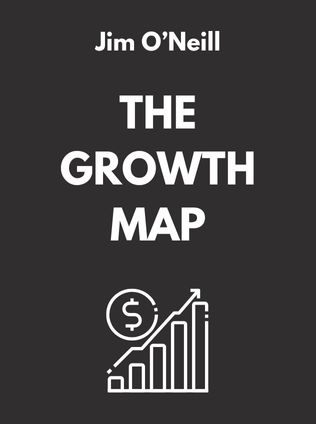
The Growth Map
Economic Opportunity in the BRICs and Beyond
By Jim O’Neill
Published 12/2011
About the Author
Jim O'Neill is the chairman of Goldman Sachs Asset Management and previously served as the firm's head of Global Economics, Commodities, and Strategy Research. He is renowned for creating the term BRIC in 2001, which highlighted the economic potential of Brazil, Russia, India, and China. O'Neill's work has significantly influenced global investing and economic strategies. His book, The Growth Map, explores the economic opportunities in these countries and beyond.
Main Idea
The Growth Map by Jim O'Neill provides an in-depth analysis of the economic potential of the BRIC countries (Brazil, Russia, India, and China) and introduces the "Next Eleven" (N-11) countries. O'Neill emphasizes the importance of these nations in the global economy, detailing their growth trajectories and future prospects. The book highlights the transformative impact of globalization and the opportunities it presents for investors and policymakers alike.
Table of Contents
- Introduction: Audacious Growth
- The Birth of the BRICs
- From Emerging to Emerged
- BRIC by BRIC
- The New Growth Markets
- Are There Enough Resources?
- Consumption
- New Allies Ahead
- The BRICs and the United States
- A New World Order
- Invest and Prosper
- A Better World
The Birth of the BRICs
In 2001, Jim O'Neill introduced the term BRIC to describe the rapidly growing economies of Brazil, Russia, India, and China. These countries were eager to engage in globalization and had significant potential to reshape the global economy. O'Neill's prediction was bold: these nations would collectively overtake the world's largest economies within 40 years. The accuracy of this prediction has stood the test of time, as the BRIC countries have experienced substantial economic growth and increased their share of the global GDP.
"Globalization was happening and they wanted to be part of it." - Jim O'Neill
O'Neill identified several key factors that contributed to the rise of the BRICs, including their large populations, economic reforms, and willingness to embrace globalization. These countries recognized the opportunities presented by the global economy and took strategic steps to integrate themselves into it.
- China's leaders embraced capitalism, leading to extraordinary economic growth.
- India leveraged its large English-speaking population to become a global hub for outsourcing services.
From Emerging to Emerged
O'Neill's analysis showed that the BRIC countries had moved from being emerging markets to major players in the global economy. Their combined GDP grew from $3 trillion to nearly $12 trillion in just a decade. This growth was driven by favorable demographics and increased productivity, which allowed these nations to contribute significantly to the global economy.
"The aggregate GDP of the BRIC countries quadrupled during the decade following my original paper." - Jim O'Neill
The growth of the BRICs was fueled by several factors, including large and growing populations, improvements in productivity, and strategic economic reforms. These countries successfully capitalized on their strengths to achieve impressive economic growth.
- Brazil's GDP overtook Italy's, making it the seventh largest economy in the world.
- China's economy surpassed Japan's, becoming the second largest globally.
BRIC by BRIC
O'Neill examines each BRIC country individually to highlight their unique contributions and challenges. Brazil became a magnet for foreign direct investment due to its natural resources and economic reforms. Russia, despite its challenges, showed potential due to its vast natural resources and strategic geopolitical position. India's favorable demographics and technological advancements positioned it as a key player in the global economy. China, with its large population and rapid industrialization, emerged as a major economic powerhouse.
Brazil
Brazil's economic rise was faster than anticipated, driven by effective policies to control inflation and attract investment. Despite initial skepticism, Brazil proved its potential by implementing reforms and capitalizing on its natural resources.
"Brazil today is the most popular of the BRICs so far as foreign direct investment is concerned." - Jim O'Neill
Brazil's success can be attributed to its strategic economic policies and natural resource wealth. The country has become a key destination for global investors, thanks to its stable macroeconomic environment and proactive government measures.
Sign up for FREE and get access to 1,400+ books summaries.
You May Also Like
Rich Dad Poor Dad
What the Rich Teach Their Kids About Money - That the Poor and Middle Class Do Not!
By Robert T. KiyosakiFreakonomics
A Rogue Economist Explores the Hidden Side of Everything
By Steven D. Levitt and Stephen J. DubnerI Am Malala
The Story of the Girl Who Stood Up for Education and Was Shot by the Taliban
By Malala YousafzaiFactfulness
Ten Reasons We're Wrong About the World – and Why Things Are Better Than You Think
By Hans Rosling



















